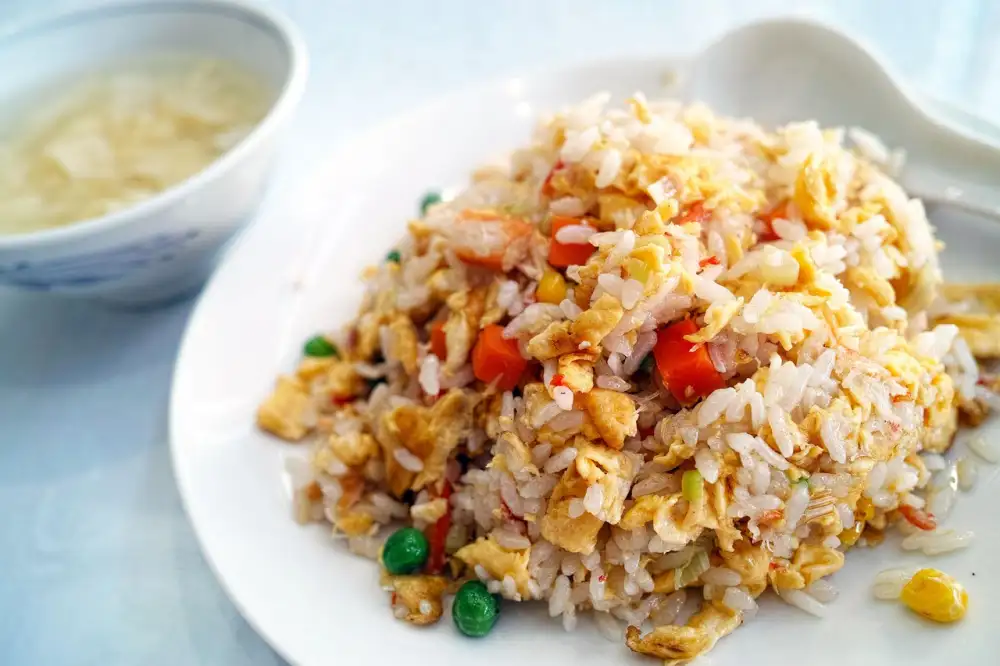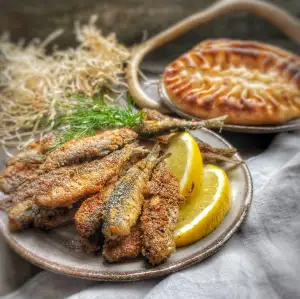Exploring the Unique Fusion of British Chinese Food: A Palate-Pleasing Journey

- Introduction to British Chinese Food
- Historical Background of British Chinese Cuisine
- Influences on British Chinese Food
- Popular Dishes in British Chinese Cuisine
- Ingredients Used in British Chinese Cooking
- Cooking Techniques in British Chinese Cuisine
- Regional Variations in British Chinese Food
- Fusion of British and Chinese Flavors
- Authenticity vs Adaptation in British Chinese Cuisine
- Challenges and Criticisms of British Chinese Food
- Tips for Exploring British Chinese Restaurants
- Conclusion: Celebrating the Diversity of British Chinese Cuisine
Introduction to British Chinese Food
Introduction to British Chinese Food:
British Chinese food is a unique and vibrant culinary fusion that has evolved over centuries. It combines the rich flavors and techniques of traditional Chinese cuisine with British ingredients and cooking styles. This delightful blend has created a diverse and exciting array of dishes that have become an integral part of British culinary culture. Whether you are a fan of sweet and sour chicken, crispy duck pancakes, or spicy Szechuan noodles, exploring the world of British Chinese food is sure to be a palate-pleasing journey. So, let's dive in and discover the fascinating history, influences, popular dishes, ingredients, cooking techniques, regional variations, and the intriguing fusion of flavors that make up this delicious cuisine.
Historical Background of British Chinese Cuisine
The historical background of British Chinese cuisine dates back to the early 19th century when Chinese immigrants first arrived in Britain. These immigrants, mainly from the southern regions of China, brought with them their culinary traditions and skills. Initially, Chinese food was primarily consumed by the Chinese community in Chinatowns across the country.
However, as time went on, British locals became curious about this exotic cuisine and started visiting Chinese restaurants. This led to a gradual increase in the popularity of Chinese food among the wider population. In fact, by the mid-20th century, Chinese restaurants had become a significant part of British dining culture.
During this period, British Chinese cuisine began to evolve and adapt to suit local tastes. Chefs started incorporating local ingredients and cooking techniques into traditional Chinese recipes. This fusion resulted in unique dishes that combined elements of both British and Chinese cuisines.
The popularity of British Chinese food continued to grow throughout the 20th century, with more diverse regional variations emerging. Today, it is not uncommon to find a wide range of dishes from different parts of China being served in British Chinese restaurants.
Overall, the historical background of British Chinese cuisine reflects a rich blend of cultural influences and culinary creativity. It is a testament to the ability of food to transcend borders and bring people together through shared flavors and experiences.
Influences on British Chinese Food
Influences on British Chinese Food:
British Chinese cuisine is a unique fusion of traditional Chinese flavors and cooking techniques, combined with British ingredients and culinary influences. The development of this cuisine can be attributed to several factors.
One of the main influences on British Chinese food is the history of Chinese migration to Britain. In the 19th century, Chinese immigrants settled in port cities like London and Liverpool, bringing their culinary traditions with them. These early settlers opened restaurants and introduced dishes such as sweet and sour chicken, chop suey, and chow mein to the British palate.
Another significant influence on British Chinese cuisine is the adaptation to local tastes. As Chinese restaurants became more popular in Britain, they began to cater to the preferences of their British customers. This led to the creation of dishes like crispy duck pancakes, which are not commonly found in China but have become a staple in British Chinese restaurants.
The availability of ingredients also played a role in shaping British Chinese food. In order to recreate authentic flavors, early Chinese immigrants had to adapt their recipes using locally available ingredients. For example, soy sauce was replaced with Worcestershire sauce, resulting in a distinct flavor profile that is unique to British Chinese cuisine.
Furthermore, cultural exchange between China and Britain has influenced the evolution of this cuisine. As more people from both countries travel and interact with each other, new ideas and techniques are shared. This has resulted in innovative dishes that blend traditional Chinese flavors with modern British cooking styles.
Overall, the influences on British Chinese food are diverse and dynamic. It is a reflection of both historical migration patterns and contemporary cultural exchange between China and Britain. This fusion of culinary traditions has created a vibrant and delicious cuisine that continues to evolve and delight food enthusiasts around the world.
Popular Dishes in British Chinese Cuisine
British Chinese cuisine offers a wide array of mouthwatering dishes that have become staples in the culinary scene. One of the most beloved dishes is Sweet and Sour Chicken, featuring succulent pieces of chicken coated in a tangy sauce. Another favorite is Crispy Duck, where tender duck meat is roasted until crispy and served with pancakes, cucumber, and hoisin sauce.
Other popular dishes include Chow Mein, a stir-fried noodle dish packed with vegetables and your choice of protein; Beef and Black Bean Sauce, featuring tender strips of beef cooked in a savory black bean sauce; and Kung Pao Chicken, which combines diced chicken with peanuts, chili peppers, and a flavorful sauce.
For those seeking vegetarian options, Vegetable Spring Rolls are a must-try. These crispy rolls are filled with an assortment of vegetables and served with sweet chili dipping sauce. Additionally, Tofu in Black Bean Sauce offers a delicious alternative for tofu lovers.
No exploration of British Chinese cuisine would be complete without mentioning the iconic dish - Fish and Chips. This classic British staple has been given an Asian twist by incorporating flavors such as soy sauce or sweet chili into the batter.
With such diverse options to choose from, it's no wonder that these popular dishes have gained widespread popularity among food enthusiasts in Britain. Whether you're craving something sweet and sour or spicy and flavorful, British Chinese cuisine has something to satisfy every palate.
Ingredients Used in British Chinese Cooking
British Chinese cuisine is a delightful fusion of flavors, and the ingredients used play a crucial role in creating its unique taste. While traditional Chinese ingredients like soy sauce, ginger, garlic, and rice vinegar are essential, British Chinese cuisine also incorporates local ingredients to create a distinct flavor profile.
One such ingredient is Worcestershire sauce, which adds a tangy and savory note to dishes like sweet and sour chicken or beef. Another popular addition is oyster sauce, which lends a rich umami flavor to stir-fried dishes.
In British Chinese cooking, vegetables such as carrots, peas, and onions are commonly used alongside traditional Chinese vegetables like bok choy and water chestnuts. This combination adds texture and color to the dishes.
Meat plays a significant role in British Chinese cuisine as well. Chicken, beef, pork, and seafood are often featured in popular dishes such as crispy duck pancakes and lemon chicken.
To add depth of flavor, spices like five-spice powder and Szechuan peppercorns are utilized. These spices infuse the dishes with warmth and complexity.
Noodles and rice are staple ingredients in British Chinese cuisine. Chow mein noodles stir-fried with vegetables or egg-fried rice served alongside various meat or vegetable dishes are beloved classics.
Overall, the use of both traditional Chinese ingredients and local British ingredients creates a harmonious balance that defines British Chinese cuisine. It's this blend of flavors that makes it so appealing to both locals and visitors alike.
Cooking Techniques in British Chinese Cuisine
Cooking Techniques in British Chinese Cuisine:
British Chinese cuisine combines traditional Chinese cooking techniques with Western influences. Stir-frying is a popular technique, where ingredients are quickly cooked over high heat to retain their texture and flavor. Deep-frying is also common, resulting in crispy dishes like sweet and sour chicken. Steaming is another technique used for delicate dishes like dim sum.
In addition to these techniques, braising and stewing are often employed to create rich and flavorful dishes such as beef in black bean sauce. Roasting and grilling are used for meats like Peking duck, which is marinated, roasted, and served with pancakes.
The use of sauces is integral to British Chinese cooking techniques. Sauces like soy sauce, oyster sauce, hoisin sauce, and black bean sauce add depth and complexity to dishes. Thickening agents like cornstarch are often used to create glossy sauces that cling to the ingredients.
Overall, the cooking techniques in British Chinese cuisine aim to balance flavors while preserving the natural textures of the ingredients. The combination of traditional Chinese methods with Western influences creates a unique culinary experience that appeals to a wide range of palates.
Regional Variations in British Chinese Food
Just like any other cuisine, British Chinese food has its own regional variations that reflect the diverse culinary traditions of different parts of China. These regional variations have been influenced by the local ingredients and cooking techniques available in Britain.
In London, for example, Cantonese cuisine dominates the British Chinese food scene. This is because a large number of early Chinese immigrants to Britain were from Guangdong province in southern China. Cantonese dishes such as sweet and sour chicken, crispy duck, and dim sum are widely popular in London's Chinatown.
In Birmingham, on the other hand, you will find a strong influence of Szechuan cuisine. Known for its bold and spicy flavors, Szechuan dishes like Kung Pao chicken and Mapo tofu have gained popularity among locals who enjoy fiery and numbing sensations on their palates.
In Manchester, there is a significant presence of Hakka cuisine. The Hakka community originated from the Hakka-speaking regions of China and brought their unique culinary traditions to Britain. Dishes like salt-baked chicken and yong tau foo (stuffed tofu) showcase the distinctive flavors of Hakka cuisine.
Other regional variations can be found across the country as well. In Liverpool, Fujianese cuisine is prominent with dishes like seafood hotpot and oyster omelette being favorites among locals. In Glasgow, there is a blend of Cantonese and Northern Chinese cuisines with dishes like crispy shredded beef and Beijing roast duck being popular choices.
Exploring these regional variations allows you to experience the rich diversity within British Chinese food. Each region offers its own unique flavors and specialties that will tantalize your taste buds and take you on a culinary journey through China without leaving Britain's shores.
Fusion of British and Chinese Flavors
One of the most fascinating aspects of British Chinese cuisine is the fusion of flavors from both cultures. Over the years, British chefs have creatively blended traditional Chinese cooking techniques with local British ingredients to create unique and delicious dishes.
This fusion can be seen in popular dishes like sweet and sour chicken, crispy aromatic duck, and chow mein. These dishes combine the bold flavors of Chinese cuisine with a touch of sweetness or tanginess that appeals to the British palate.
The use of local ingredients such as potatoes, carrots, and peas in stir-fries and noodle dishes adds a distinct British twist to traditional Chinese recipes. This combination not only enhances the flavor but also creates a sense of familiarity for British diners.
In addition to ingredients, cooking techniques also play a significant role in the fusion of flavors. Stir-frying, deep-frying, and steaming are common techniques used in both Chinese and British cuisines. By incorporating these methods into their cooking, chefs are able to create dishes that seamlessly blend the best of both worlds.
The fusion of flavors is not limited to main courses alone. Even desserts have been given a unique twist in British Chinese cuisine. Dishes like banana fritters with ice cream or lychee sorbet showcase the harmonious blending of Chinese fruits with classic Western desserts.
This fusion has not only delighted diners but has also inspired a new generation of chefs who continue to experiment with different combinations and create innovative dishes that push culinary boundaries.
The fusion of British and Chinese flavors in British Chinese cuisine is a testament to the adaptability and creativity of chefs who strive to offer something unique while honoring both culinary traditions. It is this blend that makes dining at a British Chinese restaurant an exciting and unforgettable experience for food enthusiasts seeking new taste sensations.
Authenticity vs Adaptation in British Chinese Cuisine
One of the most intriguing aspects of British Chinese cuisine is the ongoing debate between authenticity and adaptation. While some purists argue that true Chinese flavors should be preserved, others embrace the evolution and fusion that has occurred over the years.
British Chinese cuisine has undoubtedly been influenced by local tastes and ingredients. Traditional Chinese dishes have been adapted to suit British palates, resulting in unique flavor combinations and cooking techniques. This adaptation has allowed for the creation of dishes like sweet and sour chicken, crispy duck pancakes, and chow mein, which have become beloved staples in British Chinese restaurants.
However, critics argue that this adaptation has led to a dilution of authentic Chinese flavors. They believe that certain dishes have been altered too much to cater to Western preferences, resulting in a loss of depth and complexity. Some also argue that the excessive use of additives such as MSG has become synonymous with British Chinese food, further straying from its roots.
On the other hand, proponents of adaptation argue that it is a natural progression in any culinary tradition. They believe that British Chinese cuisine should be celebrated for its ability to blend two distinct culinary cultures into something new and exciting. The fusion of British and Chinese flavors has given birth to innovative dishes like salt and pepper squid, crispy beef in honey sauce, and black bean chicken stir-fry.
Ultimately, whether one values authenticity or adaptation in British Chinese cuisine is a matter of personal preference. Some may seek out traditional dishes prepared with authentic techniques, while others may be more open to embracing the creative adaptations found in modern interpretations.
As food enthusiasts, we can appreciate both approaches as they contribute to the rich tapestry of British Chinese cuisine. It is through this balance between tradition and innovation that we can truly explore and appreciate the unique fusion of flavors offered by this delightful culinary journey.
Challenges and Criticisms of British Chinese Food
Tips for Exploring British Chinese Restaurants
Tips for Exploring British Chinese Restaurants:
1. Research and Read Reviews: Before visiting a British Chinese restaurant, do some research online and read reviews to get an idea of the quality and authenticity of the food.
2. Ask for Recommendations: If you have friends or colleagues who are familiar with British Chinese cuisine, ask them for recommendations on the best restaurants to try.
3. Try Different Dishes: Don't be afraid to step out of your comfort zone and try new dishes. British Chinese menus often offer a wide variety of options, so explore different flavors and textures.
4. Look for Fresh Ingredients: A good British Chinese restaurant will prioritize using fresh ingredients in their dishes. Look for signs that indicate the use of fresh produce and meats.
5. Observe the Atmosphere: Pay attention to the atmosphere of the restaurant. Authentic British Chinese restaurants often have a vibrant and bustling ambiance, reflecting the lively nature of Chinese culture.
6. Engage with Staff: Interact with the staff members to gain insights into their knowledge about British Chinese cuisine. They may be able to recommend popular dishes or explain certain cooking techniques.
7. Check for Authenticity: While fusion is common in British Chinese cuisine, if you're looking for a more authentic experience, look out for restaurants that focus on traditional recipes and cooking methods.
8. Be Open-Minded: Keep in mind that British Chinese cuisine has evolved over time, so be open-minded about adaptations and variations you may encounter in different restaurants.
9. Enjoy Tea Pairings: Traditional tea pairings can enhance your dining experience at a British Chinese restaurant. Explore different types of teas like jasmine or oolong to complement your meal.
10. Embrace Diversity: Celebrate the diversity within British Chinese cuisine by trying dishes from various regions such as Cantonese, Sichuan, or Hakka.
Remember, exploring British Chinese restaurants is not just about satisfying your taste buds but also embracing the cultural fusion that has shaped this unique culinary tradition.
Conclusion: Celebrating the Diversity of British Chinese Cuisine
British Chinese cuisine is a unique fusion that has evolved over centuries, blending traditional Chinese flavors with British ingredients and cooking techniques. This culinary journey showcases the rich history and cultural influences that have shaped this vibrant cuisine.
From the early Cantonese immigrants to the present-day chefs pushing boundaries, British Chinese food continues to evolve and surprise. It celebrates diversity by incorporating regional variations and embracing new flavors while staying true to its roots.
While some may argue about authenticity versus adaptation, it is important to appreciate the creativity and innovation that comes with fusion cuisine. British Chinese food offers a delightful blend of familiar and exotic flavors, appealing to a wide range of palates.
Despite facing challenges and criticisms, British Chinese restaurants continue to thrive by offering delicious dishes that cater to various dietary preferences. Exploring these restaurants provides an opportunity to experience the harmonious marriage of British and Chinese flavors.
In conclusion, British Chinese cuisine is a testament to the multicultural society we live in today. It exemplifies how different cultures can come together to create something truly extraordinary. So let us celebrate the diversity of British Chinese cuisine and embark on this palate-pleasing journey that will leave us craving for more.
Published: 15. 11. 2023
Category: Food



